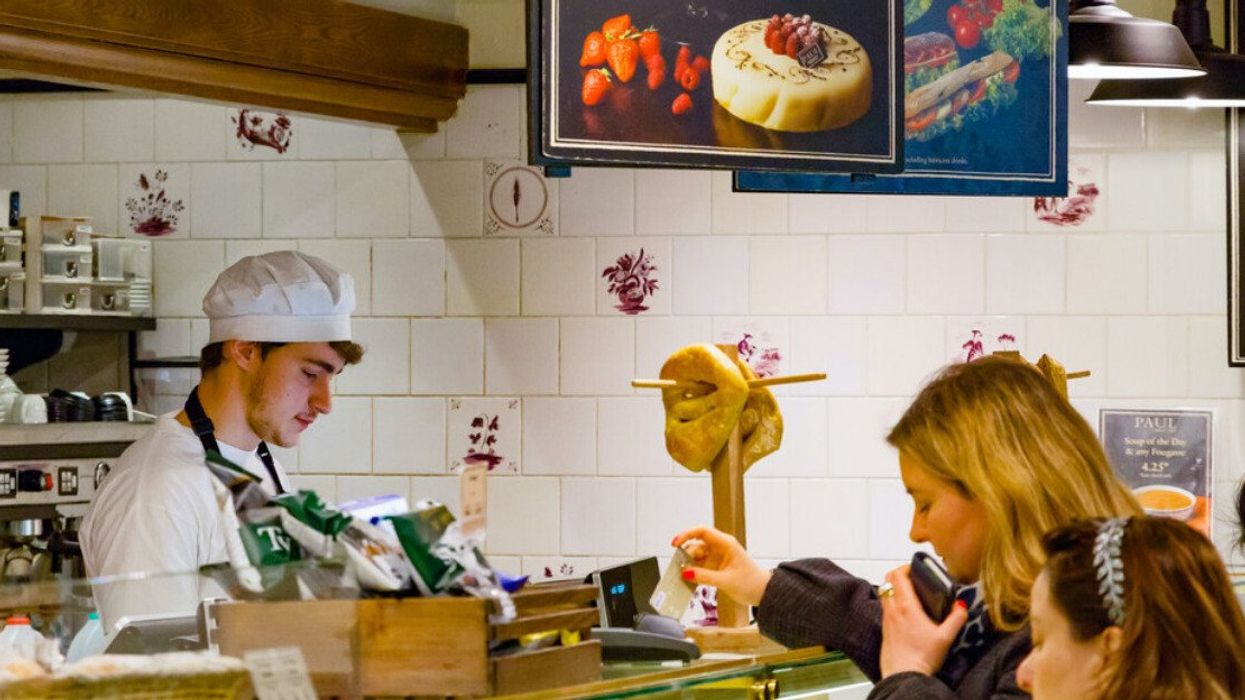Here's How Much You Should Be Tipping In Canada So You Can Stop Guessing
Are you doing it right?

Someone taps their credit card on a pay terminal at a café.
Tipping in Canada can feel complicated when every meal out, hotel stay, or service encounter comes with the added challenge of calculating the appropriate gratuity. But understanding how much to tip in various situations can reflect on you and your manners.
Recent insights from financial platform Hardbacon indicate discomfort among Canadians caused by digital payment terminals suggesting larger tips, with over 60% feeling pressured into generosity. The phenomenon, known as "tipflation," is pushing the boundaries of traditional tipping practices.
Here's a breakdown of current tipping standards, to ensure you handle each situation with confidence:
Restaurants & Bars
The tradition of tipping in restaurants and bars is well-established, with 15% of the pre-tax bill being the standard for satisfactory service. The rate is not a reward for the server's attention and care, it's part of their overall income, given the industry's reliance on gratuities to supplement wages. So, if you're going to dine or drink out, you need to factor tipping into your budget.
Customers should feel empowered to adjust tip amounts based on the quality of service received. That means you should definitely pay more if your server goes above and beyond. That does not mean you should tip less if something outside of a server's control has gone wrong (i.e. undercooked fish does not mean straight to jail).
Unlike other provinces, which follow minimum wage systems, Quebec services workers are paid $12.20 an hour, just over $3 less than the minimum wage for other industries. The wage gap underscores the importance of tipping as a significant part of these workers' earnings.
Delivery Services & Ride-Sharing
The rise of app-based services has introduced a new layer to tipping etiquette. For food delivery services, a tip of around 10% is becoming the norm. However, consider the context of your order — inclement weather, exceptional speed, or orders that are large and cumbersome might all justify a higher tip.
Similarly, for ride-sharing apps like Uber, tipping has transitioned to an expectation, with a similar 10% guideline. However, tipping should also account for the quality of the ride, including the cleanliness of the vehicle and the driver's professionalism.
Personal Care & Hospitality
Services that involve personal care, like haircuts, spa treatments, and massages, typically see a gratuity of 10% to 20%, reflecting the direct, personal nature of the service and the skill involved.
In hotels, tipping extends beyond the front desk to include housekeeping, bellhops, and valet services. A few dollars per day for housekeeping, $2 per bag for bellhops, and around $5 for valet services can go a long way in showing appreciation for their hard work and attention to detail.
Tipping, while a voluntary gesture, speaks volumes about societal values and the recognition of service workers' efforts. As digital payment options evolve and "tipflation" continues to influence consumer behavior, staying mindful about tipping practices ensures that the practice remains a fair and respectful expression of gratitude.

